The American chuck wagon. It's a vehicle steeped in western history aswell as cowboy legends and Hollywood lore. Custom built as a hub of operations for trail drives and round-ups, these historic sets of wheels still turn heads on and off the plains today. From ranch work and promotional backdrops to special events and competitions, these vehicles not only represent a dramatic era within the development of the West but continue to serve as vivid reminders of the enduring spirit and determination that built our country. As of this writing, the American Chuck Wagon Association (ACWA) counts over 150 of these wagons among their membership. Clearly, the design enjoys widespread recognition and popularity. In fact, such is the historic significance of these wheels that, in 2005, the Texas legislature proclaimed the chuck wagon to be the Lone Star state's official vehicle.
Over the past few months, we've received a number of emails related to chuck wagons - Some with questions on maintenance and original traits; others conveying news and various exploits; and still others inquiring about a particular part of the vehicle's history. With that in mind, we decided to post some of the details that were passed along to us as well as a few notes we were able to provide.
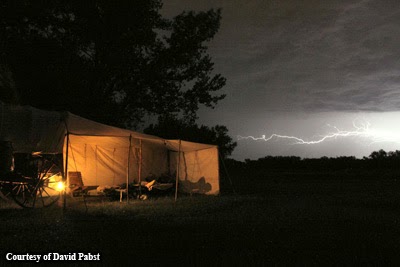 |
| David Pabst shared this photo of his chuck wagon and campsite. He titled the image, "Rough Night on the Platte." |
While the beginnings of the chuck wagon are typically credited to Charlie Goodnight, there are sometimes variations within other parts of the history-telling of this vehicle. It's another reminder of the importance of relying on the strength of primary sources to help paint the most accurate pictures. While we know of no photographs that have survived showing Goodnight's wagon, there have been plenty of descriptions over the years. One interesting note from the 1930 book, "Cattle," (see Feb. 19, 2014 blog post) asserts that Mr. Goodnight's first chuck wagon was pulled by ten yoke of oxen. It's a description that lends added credibility to the purported use of a heavier army wagon as the first chuck wagon. Clearly this information was procured while Goodnight was still alive as the book was published within months of his death. These and other period accounts help give us a better glimpse of the origins and all-but-lost details of American chuck wagons.
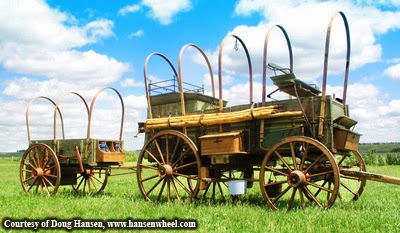
This Dakota Cowboy chuck wagon built and outfitted by Doug Hansen includes a period-inspired trail pup.
Reinforcing this history, there are a number of folks involves in building, conserving, and restoring these unique western vehicles today. After decades inthe business, Doug Hansen of Hansen Wheel & Wagon Shop has become well known for quality vehicles of all types, including his Dakota Cowboy chuckwagons. Leaning heavily on history, these pieces have showcased events from coast to coast. Leveraging his familiarity with chuck wagons, Hansen recently delivered an in-depth presentation on the design during the Carriage Association's biennial meeting in Colonial Williamsburg. His address provided additional insight into the vehicle's birth, design, and trails as well as participants, outfitting, and cooking. Details from events like this one help draw additional interest in the promotion and preservation of these vehicles.
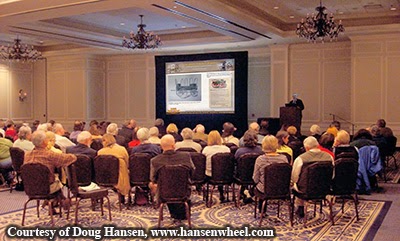
Doug Hansen at the Colonial Williamsburg conference.
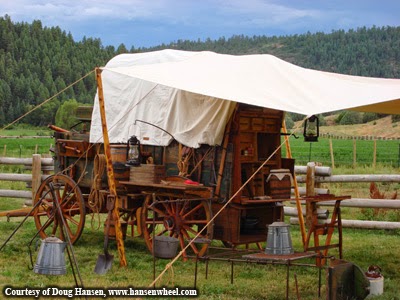
Doug Hansen shared some additional images of custom outfitted chuck wagons.
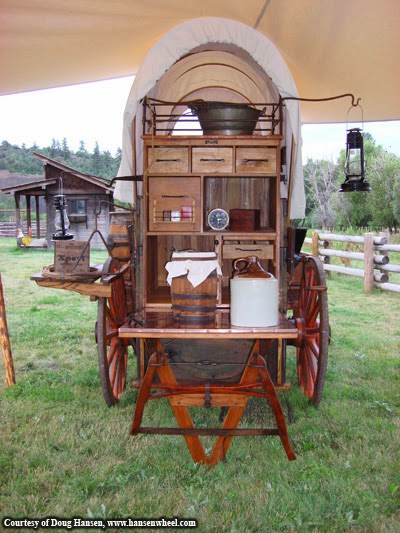
Likewise, I enjoy hearing from Kathy Christensen of Midwest Buggy as she always seems to be working on interesting pieces. Recently, she shared some photos of a chuck wagon she finished in her shop in Lockney, Texas. It's a Newton, originally built in Batavia, Illinois. The brand has a strong heritage with founder Levi Newton's wagon-making experience dating back to the late 1830's. The high-wheeled Newton shown below was purchased by an ACWA cook-off competitor looking for a quality, original piece with solid features and exceptional paint. The tall, 52-inch wheels are further complemented by a 38-inch width box and standard ten-foot-six-inch bed length.
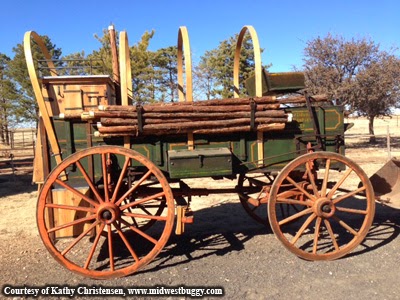
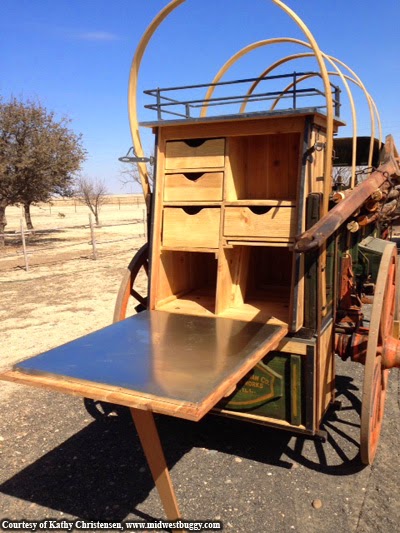
Other chuck wagon builders that have shared details with us in the past and also compete in ACWA events include Glenn Mooreland of texcowboy.com, Wayne Snider and Bill Thompson of wayneschuckwagons.com and Tom Elliott at cowboycooking.com. Each of these folks is well-known among western vehicle enthusiasts.
When it comes to describing chuck wagons, one bit of advice is just as pertinent with these rolling icons as it is with almost every other early wood-wheeled vehicle. It's a point of counsel that bears repeating... Over and over we've shared that the use of absolute terms like 'always' and 'never' has the potential of opening up a can of worms. The reason is that, in many cases, these were custom built vehicles (or elements of vehicles) designed by individuals. Oftentimes, each person held their own ideas to the needs for a specific set of wheels. So, while there can be strong similarities between period chuck wagons, there may also be historically-supported variations in the structure and design of these vehicles. It's one more reason we spend so much time scouring the country for surviving resources profiling these pieces. Over the years, we've been fortunate to add a sizeable number of original chuck wagon images to the Wheels That Won The West® collection. These rare, period photographs along with equally scarce early literature hold important details about the diversity of these wagons and have been greatly beneficial to our research. Individually and collectively they've not only helped dispel some misconceptions, but have also reinforced the realities around the design and use of this vehicle.
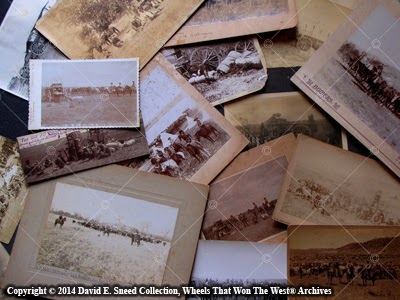
The photo above shows a small sampling of period chuck wagon imagery housed in the Wheels That Won The West® Archives.
Thanks for stopping by this week. We enjoy sharing details about early heavy and western vehicle history. By the way... If you haven't signed up to receive NOTIFICATIONS when we post this weekly blog, it's easy. Just click the link in the upper right of our web page and enter your email address. Please don't hesitate to let us know if we can be of assistance. We're looking forward to your visits each week.